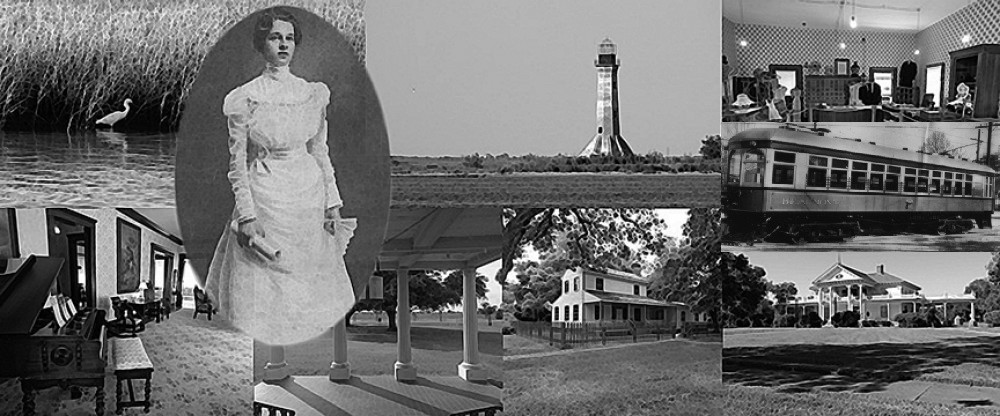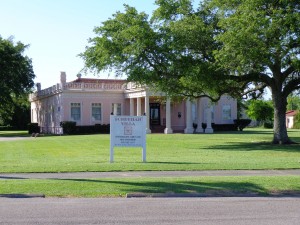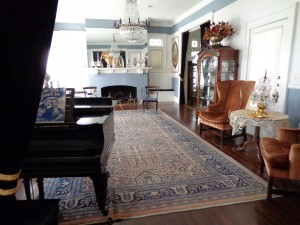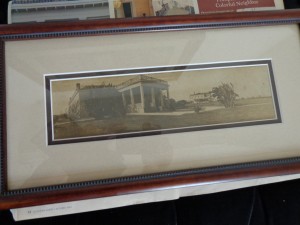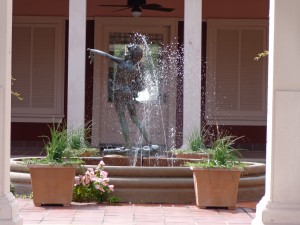I recently took a tour of the Pompeiian Villa in Port Arthur, Texas. I must say, it is a most interesting place to visit. The tour guide was informative and a joy to listen to. But the experience got me thinking about the history of the place and the players who made the elegant structure what it is.
The Pompeiian Villa is an authentic replica of a 79 A.D. Pompeiian home, built by Isaac Ellwood (the “Barbed Wire King”) in 1900. It was one of three structures planned to be built on the eight-acre stretch of lakefront property in Port Arthur. The second home was John Warner “Bet-a-Million” Gates’ 20-room Georgian Revival mansion, a pre-civil war “Gone with the Wind”-style home with a carriage house at the back. A third home was planned by an investor, Mr. James Hopkins (president of the Diamond Match Company, St. Louis, Missouri), but sadly Mr. Hopkins could not come up with an idea for a suitable structure so the land between the two aforementioned homes was never built upon.
After the Villa was completed, Mr. Ellwood lived there for a year but then sold it to Mr. Hopkins in 1901. Mr. Hopkins loved the house dearly. So much so that he sent for his wife in St. Louis to accompany him to this great abode to live during the winter months. Mrs. Hopkins took the train down from St. Louis, expecting to see paradise. After the train ride, she boarded a carriage and was taken to her new winter home. When she arrived, she saw the great Villa in all its glory—built in muddy marshlands next to a lake. She was not impressed. Without hesitation, she returned to the train station and travelled back to St. Louis without setting foot inside the Villa.
Mr. Hopkins never lived in the Villa but continued to own it for a further two years. During this time, he rented it out to a Mr. James Guffey, who was one of the financiers behind the successful second drilling attempt in the area, which we all know as Spindletop, or the Lucas Gusher. Mr. Guffey also constructed the first oil refinery in Port Arthur.
In 1903, Mr. Hopkins traded the Villa to Mr. George Craig in exchange for $10,000 worth of Texas Company stock, which represented 10 percent of the newly formed company. The Craig family lived in the Villa until 1946. During that time, the Craigs kept the Villa true to its original design and, aside from doing routine maintenance and painting, did not change a thing. The Craigs then sold it to Captain Arne Pederson , who occupied it for 19 years.
In 1965, the Villa’s future looked bleak. It had been on the market for twelve years, for five of which it had lain vacant, and there were no buyers. It had deteriorated much since its glory days and was even in danger of being torn down. Luckily, the demolition never happened thanks to the Port Arthur Historical Society’s purchase of the Villa for $25,000. Years of renovation followed, and the Villa was opened to the public in the early 70s.
As you tour the Villa, you notice that each room has a different theme. This adds to the rich history that Isaac Ellwood created so long ago in the marshlands of early Port Arthur. There are many pieces of art, relics, and furniture, which have been donated to the museum over the years. The Pompeiian Villa is the sole surviving beacon of Arthur Stilwell’s “Dream City,” and a definite treasure to our area.
For touring information see below:
1953 Lakeshore drive Port Arthur, Texas
Telephone # 409-983-5977
Hours: As of August 18, 2014, Pompeiian Villa hours will be Monday thru Friday 1pm – 5pm.
Group tours by reservation.
Admission: $2.00
